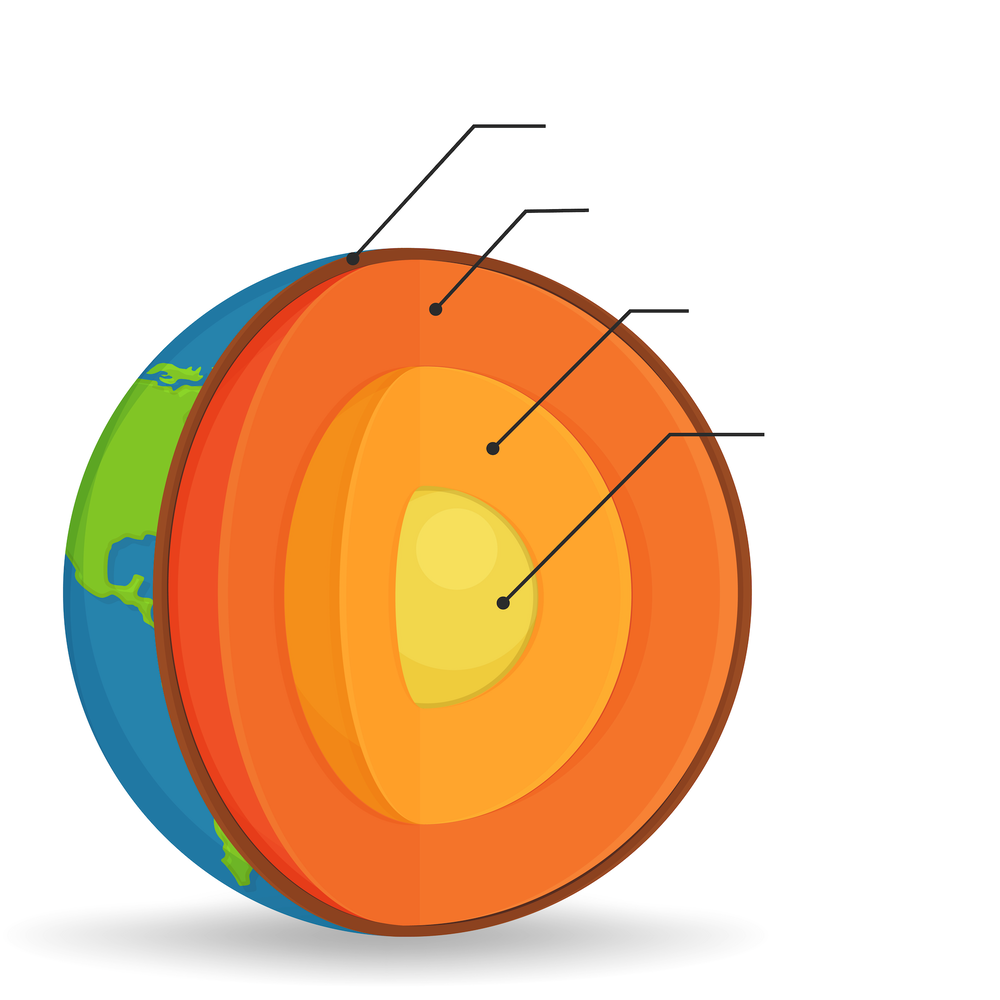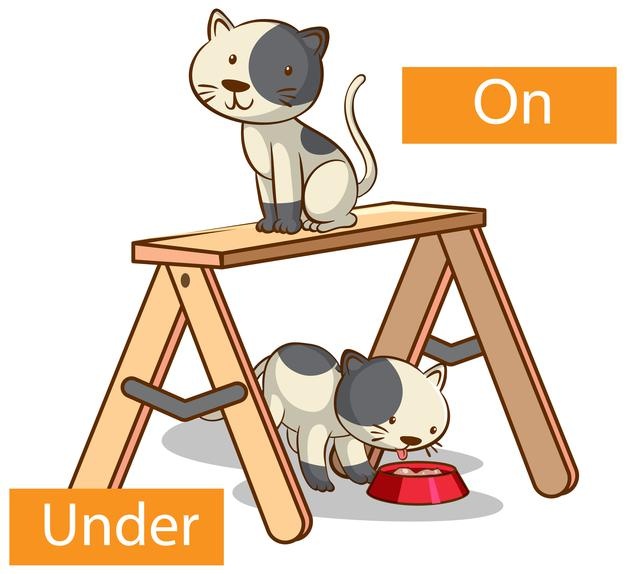EVS Worksheet : Solar System For Class 3 Students
Layers of the Earth
The structure of the earth is divided into four major components , the crust, the mantle, the outer core, and the inner core. Each layer has its own unique chemical composition, physical state, and can impact life on Earth’s surface.
The Crust
This is the outermost layer of the earth's surface and is made up of solid rock, mostly basalt and granite.
There are two types of crust; the oceanic and the continental.
Oceanic crust is compact, denser and thinner and mainly composed of basalt. Continental crust is comparatively less dense, thicker, and mainly composed of granite. Oceanic crust can be found at the bottom of the oceans or below the continental crust
The crust is everything that we can see and study directly. The thinnest layer of the Earth, the crust measures about 40 km on average, ranging from 5–70 km (~3–44 miles) in depth. But at the scale of the planet, that’s even less than the skin of an apple. The crust is not the rigid thing, but it’s split into several tectonic plates. These tectonic plates are not stationary, but are in relative motion one from another.
The mantle
The mantle lies just below the crust and is up to 2900 km thick. It consists of hot, dense, iron and magnesium-rich solid rock. The crust and the upper part of the mantle make up the lithosphere, which is broken into several plates, both large and small, making it the thickest layer of Earth. It makes up almost 84% of Earth’s volume.
The mantle Is also divided into many layers, based on seismologic properties. The upper mantle extends from where the crust ends to about 670 km. Even though this area is regarded as viscous, you can also consider it as formed of a rock called peridotite .Below that, the lower mantle extends from 670 to almost 2900 km below the surface.
The core
The core is in the centre of the earth and is made up of two parts: the liquid outer core and solid inner core.
The Inner core
The inner core spins faster than the rest of the planet. It’s also intensely hot here; the temperatures sizzle at 5,400° Celsius (9,800° Fahrenheit). That’s almost as hot as the surface of the sun. Pressures here are immense ,well over 3 million times greater than on Earth’s surface. Some research also suggests that there may also be an inner, inner core. It would likely consist almost entirely of iron.
The outer core
The outer core is made of metals like nickel, iron and molten rock. Temperatures here can reach up to 50,000 Celsius. Heated largely by the radioactive decay of the elements like uranium and thorium, this liquid churns in huge, turbulent currents. That motion here generates electrical currents. That in turn, generates Earth’s magnetic field. For reasons somehow related to the outer core, Earth’s magnetic field reverses about every 200,000 to 300,000 years.
Instructions to solve the worksheet
Given below is the picture of earth showing its different layers. Label the layers in the structure of the earth and based on your study and understanding answer the following questions .And complete the blank spaces using the suggestions provided in the box.
Importance of Environmental Education
- EVS helps children to develop their own insights into the functioning of several things or understanding human processes in their environment. Such interactions with their surrounding environment are immensely important for the healthy development of children.
- Not only does environmental education offer opportunities for experiential learning outside of the classroom, it enables students to make connections and apply their learning in the real world.
- EVS helps learners see the interconnectedness of social, ecological, economic, cultural, and political issues
- By providing environmental education to students they will engage problem-solving techniques of the outer world to their subjects to understand a particular problem by implying outdoor environmental solutions.
- Environmental Education gives students a new meaning of exploring mother nature to see and resolve the issues which are harmful to the environment and this will also help them in maintaining their own health by doing physical work so that their bodies will be immune from some serious health issues such as short-sightedness, obesity and in some cases even lack concentration.
- The one major issue which we need to deal with is pollution and if we don’t educate our kids about the hazardous effects of environmental damage there will be no future in the world.













































